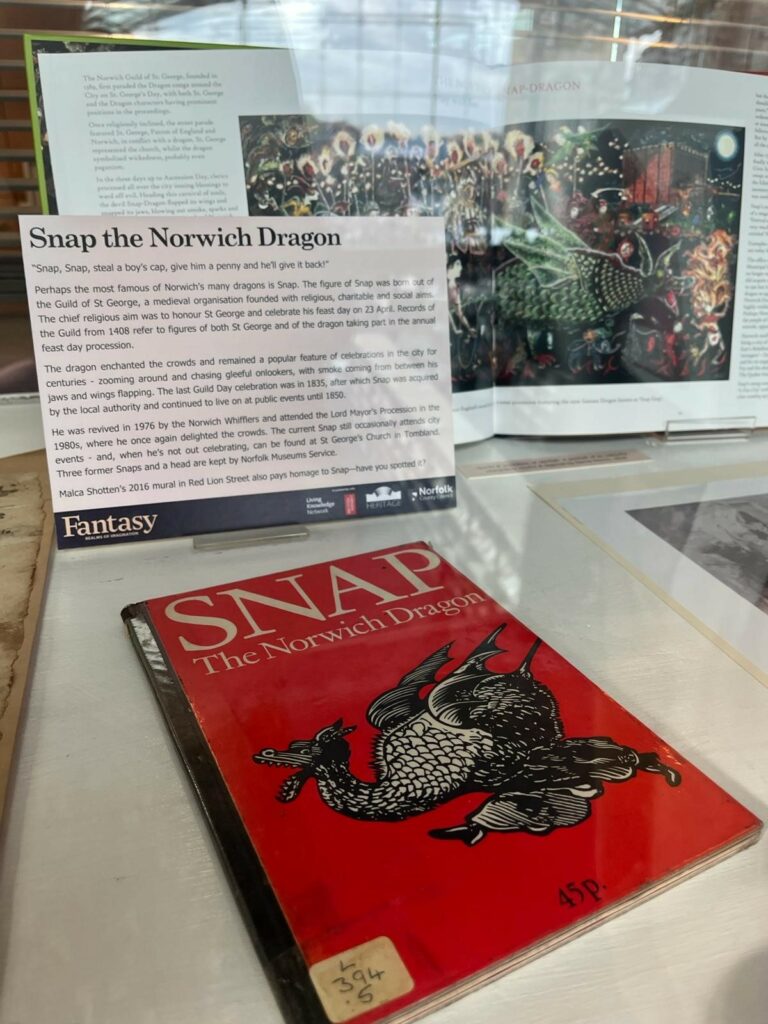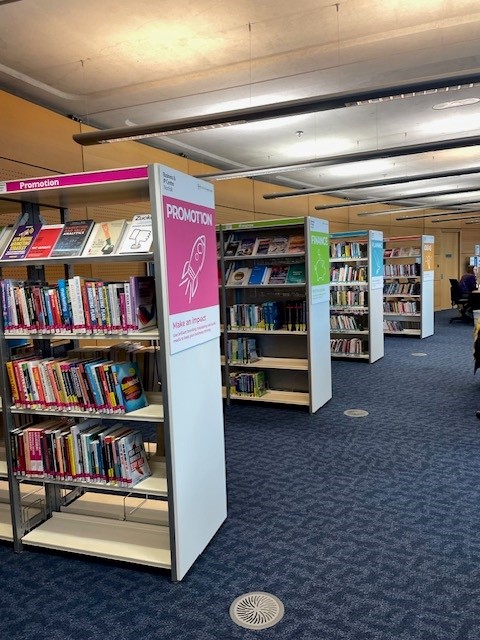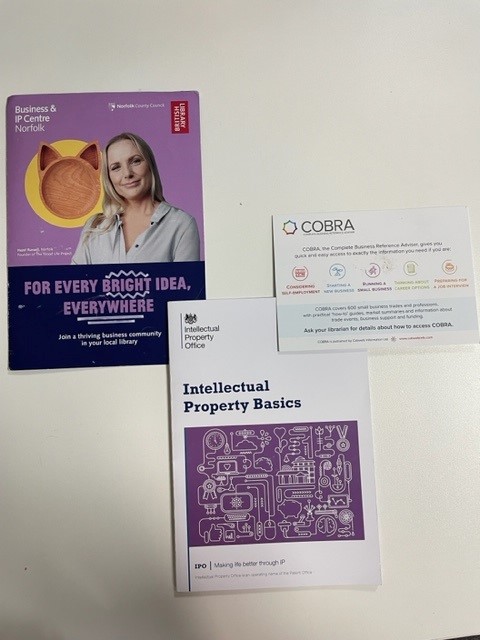The Heritage Centre
We climbed the stairs to the second floor and were rewarded with a spectacular view of St Peter Mancroft’s Church and the ancient marketplace beneath. Norwich is renowned for its rich medieval history and the view was inspiring as it captured what the heritage centre might symbolize for many.

The Heritage Centre is a hub for local history; it is open to all who want to learn more about Norfolk and its inhabitants. The librarian giving us the tour explained that Norfolk heritage centre is the only designated quiet space within the Millennium library, due to the nature of the library being within the Forum, which is a multi-use space. The silence was respected as studious individuals kept their heads buried deep in research material. What curiosities were being discovered? Had someone found the missing clues to a long-forgotten family history? As we tiptoed through the centre, we stopped to peek at a few exhibits on display. One of our favourites included the telling of “Snap the Norwich Dragon,” and how it played a part in the annual feast day celebration on St George’s day. Other exhibits included subjects on witchcraft, ghosts, the supernatural and local lore.

The mission of the heritage centre is to provide free access for all by reducing and eliminating barriers to information. The centre hosts a ‘drop in at any time’ policy for people who wish to explore the microfilm newspapers and open reference books. The heritage centre has access to microfilm newspapers and digital readers, and it was explained to us that there are many items in the heritage centre’s stored collection, which are available by request. These include printed volumes, maps, newspapers, and photographs all related to the local history of Norfolk and its inhabitants. The librarian showed us where the maps and records were kept, and some maps dated back to the 1500s. Many of these maps are useful today for people who are seeking to establish property boundaries. The heritage centre also provides access to the Norfolk Record Office archives, which include certificates of births, deaths, and marriages; these are also available online through their digital archive. The digital archives ever continue to develop and grow; they now contain over 30,000 images related to Norfolk.

Our time at the heritage centre showed us the diversity of Norfolk’s community represented within the historical collection and created an inclusive and welcoming atmosphere for all.
We finished our tour of the heritage centre and said goodbye to our amazing host who had given us a fully comprehensive tour of the library and the services provided, before being handed over to the BIPC centre.
Business and Intellectual Property Centre (BIPC) Norfolk.
For the remainder of the morning, we spent time in the Business and Intellectual Property Centre (BIPC) within the Millennium Library. Our second host was the BIPC library coordinator who invited us to enjoy a hot cup of tea and biscuits. We were made to feel very welcome and settled into comfortable chairs, which were much appreciated. Many materials about the BIPC were also kindly set out for us to look at.

The BIPC environment is kitted with business focused book collections which are organized into the following categories: Ideas, Planning, Finance and Promotion. There are several desks and study booths for people to use along with bookable meeting rooms and PC’s. On display there are booklets and pamphlets all relating to business, they also included government publications from the Intellectual Property Office.
Our host explained that BIPC Norfolk is part of the British Library Business & IP Centre National Network, which helps support ideas develop into successful business. Through offering access to business knowledge, publications, guidance, workshops, networking, and legal advice, the BIPC Norfolk provides a foundation for many entrepreneurs as they embark on their business adventure. The help received by the public is held to the British Library standard. The BIPC aims to promote outreach, engagement, and access to business information for the public. There are currently four members in the UK within the nationwide network for business support in public libraries; Norwich became involved in Patent Libraries (PATLIB) since 2017. The PATLIB services offer guidance on identifying intellectual property and how to protect it. The services run across seven districts within Norfolk so there is one business library in each district. The centre provides support to people who may be considering self-employment, starting, or running a new business, career planning and job interviews.

The public users have access to trained staff to support the evaluation of business information by using their skills to identify the source of information and its credibility. The centre also provides free access to online databases and business information including market research, grants, and company reports. The workshops offered explore current business issues including international trade in a post-Brexit era, search engine optimization for promotion and making businesses more sustainable.
It is clear how invaluable the BIPC services are for the community. By helping to remove barriers to business information; this service seems significant for economic growth, not only for individuals, but also the prosperity of the community. The power and impact which the BIPC has the local community was motivational and inspirational.
After an insightful tour and talk of the BIPC centre, we concluded our morning at Norfolk and Norwich Millenium Library. But our day was not over yet, we had our visit to the Norwich Cathedral Library to look forward to in the afternoon. Watch out for our blog post on this; you won’t want to miss it!
